AI generated image
Lots of places in Europe set out to attract more visitors. More visitors means more money for those whose living depends on tourism and the spending power of people from elsewhere, however far they may have come. But not everyone likes tourists. No, I shall rephrase that. Virtually everyone who doesn’t depend on tourism for their living actively dislikes tourists. They get in one’s way, clutter up any famous site or famous building and can be a real pain in the passport. The problem is that Europe’s leading tourism sites depend on getting a lot of generous visitors, many of them happy to splash their cash on what is sometimes called “tourism tat”: relatively worthless mementoes sold to visitors at elevated prices so that those who come visiting have decorative or in some way interesting articles to display around the home and even to show off to visitors. “Yes, that’s where we went for our holidays this year. Lovely, isn’t it?” Having travelled to lots of places in my life as a journalist I must admit to having brought quite a few things things home as mementoes, even if some might dismiss them as “tourism tat”. I like them anyway, and so does my wife. After all, I bought them, so I must have.
But tourists have caused anger in a number of places, however necessary they may be for the local economy. Let’s look at Paris, for instance (a city I love, by the way) where there are moves to charge people for entering the Cathedral of Notre-Dame. It sounds like a reasonable proposal, given how much wear and tear all those visitors inflict on the ancient structure. Now there is a proposal to charge an entrance fee, although it has been free until now. Then there’s Rome, which is now proposing to charge visitors to visit the Trevi Fountain. Venice already demands payment from those wanting to potter around the place, camera in hand (it’s certainly well worth the money, if you’ve never seen it). Other places are also beginning to take note of their potential for raising funds through their understandable popularity.
Nowhere has tourism caused more problems than in Spain, where those opposed to having their towns and beaches filled with foreigners having a good time have shown their displeasure in colourful ways. There have been instances of locals traipsing across beaches to attack and even injure visitors, which isn’t a way to boost tourism figures. Just in case more of them turn up, Barcelona has announced plans for a city-wide ban on all short-term rentals.
I suppose that may please the hoteliers who would prefer people to stay with them, but over-all it can only depress the total numbers of visitors. Placards reading “Tourists go home, you are not welcome” probably don’t help to boost the holiday trade either, but they’ve been seen in Barcelona. Strangely, all the protestors shown in press photographs seem to be smiling, rather than looking angry or unhappy. Maybe they were just pleased to get their pictures in the local newspaper. Action against tourists has increased with some visitors even being sprayed with water from hosepipes whilst being screamed at over what has been called the “touristification” of such places This applies especially to those considered to be “culturally significant”, because of the way that the soaring numbers of visitors is impacting on the lives of locals. We should, perhaps, bear in mind that Barcelona attracted almost 26-million visitors in 2023, which is roughly sixteen times the local population. Mass tourism has been – and remains – on the increase.
There have always been locals eager to gaze upon sunbathers, especially those wearing few clothes, although the gazers were, of course, mainly men and “gaz-ees” (if I may call them that) were by-and-large young and scantily-clad women. But there have been anti-tourist protests and demonstrations held in Greece, Italy and Portugal, too, as well as in more northerly parts of Europe, such as Bruges in Belgium, where new restrictions on tourist numbers are being enforced following a bumper crop of more than ten million visitors in 2023.
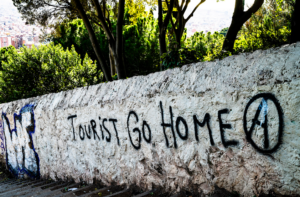
That’s a lot, but I’ll bet they enjoyed the town and the local beer. I always did, although I was just there to work. Bruges is a vastly underrated destination, in my view. But while the tourists may not be welcome, their money certainly is. Without them a lot of services would doubtless disappear, and everything would cost more. But sloganizing and logic seldom go hand-in-hand.
| YOU’RE WELCOME (TO SPEND) HERE
New rules are also being applied in Amsterdam and other parts of the Netherlands, where locals were seeing te veel mensen – too many people. The whole issue has disturbed people’s feelings and attitudes. Take the Spanish town of Málaga, for instance, which one local told the BBC is “collapsing” under the sheer weight of visitor numbers. An exaggeration, obviously, but also a reflection of local attitudes, despite the fact that tourism accounts for 13% of Spain’s GDP. Losing it would severely damage much of the country and a great many of its people, whatever the protestors may think or wish.
The same holds true for the popular tourist resorts of England, although trying to drive visitors away comes at a cost. In Cornwall, in south-west England, which has long been a tourism magnet because of its (relatively) sunny weather (a rarity in much of the UK), a drop in tourist numbers has led to the closures of some shops, including one selling vintage fashions. Vintage Superstore, as it was called, has collapsed, with debts of some £250,000 (just over €300,500) because of a sharp fall-off of tourism. Its owner, Ollie Hawkins, blamed a tough winter in 2023, especially because an expected upturn in the ensuing summer failed to materialise. The summer was certainly fairly poor in 2024 and that fact seems to have been reflected in smaller numbers of visitors. We should not forget, perhaps, that tourists have long been unpopular in some parts of the English south-west.

In Cornwall, for instance, tourists are referred to as “emmets”, an old word in the Cornish language, which very few people know, let alone speak. It means ants. Next door, in the county of Devon, tourists are called “grockles”, and I have no idea of that word’s origin. It’s not used in a friendly way, however, in the main. Poor Mr. Hawkins: “Unfortunately” he said, “the summer tourism trade – our main source of profitable income – plummeted in 2024.” Sadly, we still cannot control the weather, although few people would want a wet, chilly holiday with non-stop rain.
The result of all this resentment, which seems to be rooted partly in local jealousy of the visitors’ relative seeming wealth, has been the increasing imposition of monetary charges for the right to gaze and “gawk”, a word defined in the Cambridge Dictionary as meaning “to look at something or someone in a stupid or rude way”. Of course, the tourists simply want to see somewhere that’s new to them and enjoy the novelty of the surroundings, the architecture, the history or even the local cuisine. The issue is posing problems for ancient churches, which find themselves obliged to charge worshippers (or at least visitors) for looking admiringly at the historic and beautiful architecture. Take the lovely and ancient York Minster, where access is now only free to those who can prove they’re residents of the city or else are studying there. The church authorities point out that they never charge people who enter the building to attend a religious service, to pray or to light a candle. Then there’s Canterbury Cathedral, which has been a leading place of worship for 1,400 years. Here, during such religiously important times as Christmas and Easter, for instance, there is no entry charge, although the church authorities invite donations to help maintain the fabric, of course. Such important and historic buildings are not cheap to maintain, requiring specialist skills that are increasingly rare in our mechanised world.
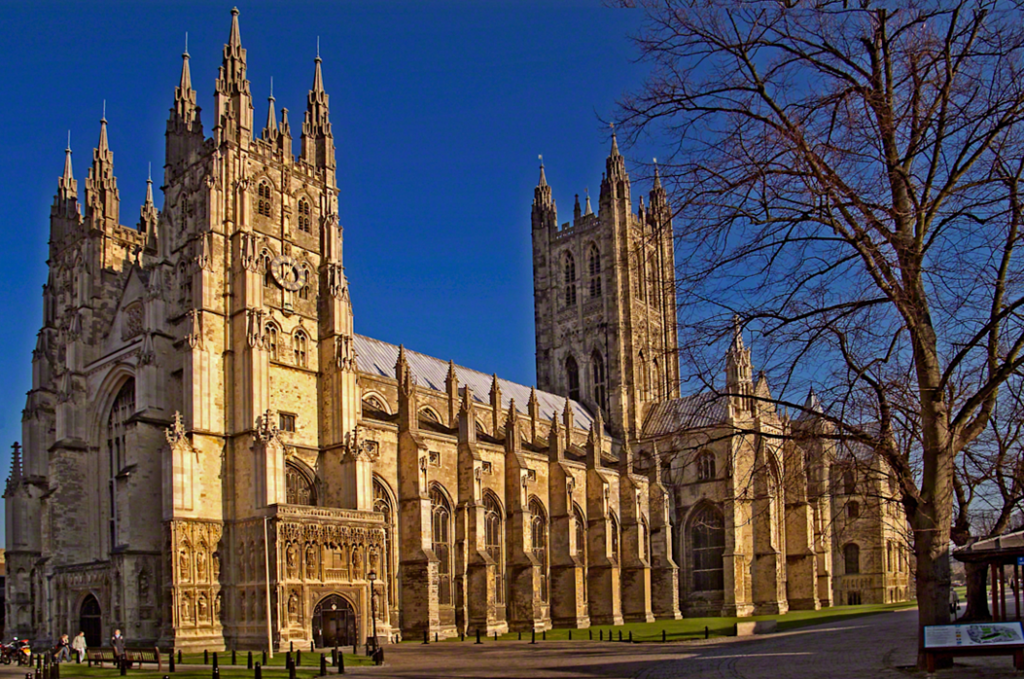
How did we arrive at this odd juncture, with interesting places competing for tourists they don’t seem to want or to welcome? It seems that it’s a combination of post-pandemic demand, greater disposable income in such countries as India and China and the ready availability of air travel to virtually everywhere, according to Yassin El Khououj, Managing Director of Boston Consulting Group, writing in Fortune magazine. “The rise of low-cost airlines,” he wrote, “has allowed the development of cheap city breaks and short trips, in parallel, in most cases, “overtourism” has yet to be properly addressed by destination authorities.” Meanwhile, the falling price of airline tickets has made weekend visits to popular holiday destinations more feasible for many. Indeed, “overtourism” has become a very important issue and a talking point for locals living in popular holiday destinations.
| ATTRACTING MORE TOURISTS (AND MONEY?)
The plain fact, for businesses based in such popular spots, is that tourists have money that they’re more than willing to spend, but more and more shops selling tourist goods can change the character of the very areas people come to see. It’s not much fun for locals, either, unless their income depends directly on tourists. Of course, the tourists do not realise the negative impact they may be having on the places they’ve come to see, although their presence in such vast numbers will undoubtedly put local water supplies and sewage disposal under stress. Temperatures have risen, too, and there is inevitably a social impact: the price of success in attracting tourists is, it seems, too many tourists. Manuel Alector Ribeiro, an Associate Professor in tourism management at the University of Surrey in the UK has blamed a lack of effective management as “tourism is supposed to be an industry or sector for social good.” But he contends that instead it has been “breeding hostility between residents and tourists.” That is undoubtedly true, but tourism is in most cases vital to the local economy. Travel tourism, according to the World Travel and Tourism Council, directly provided 7.7% of the GDP for Venice in 2022. Unfortunately, it has also pushed up the price of housing, with short-term stays winning out over long-term rentals, forcing out the local residents who find themselves obliged to seek permanent accommodation further from their work or from local amenities.
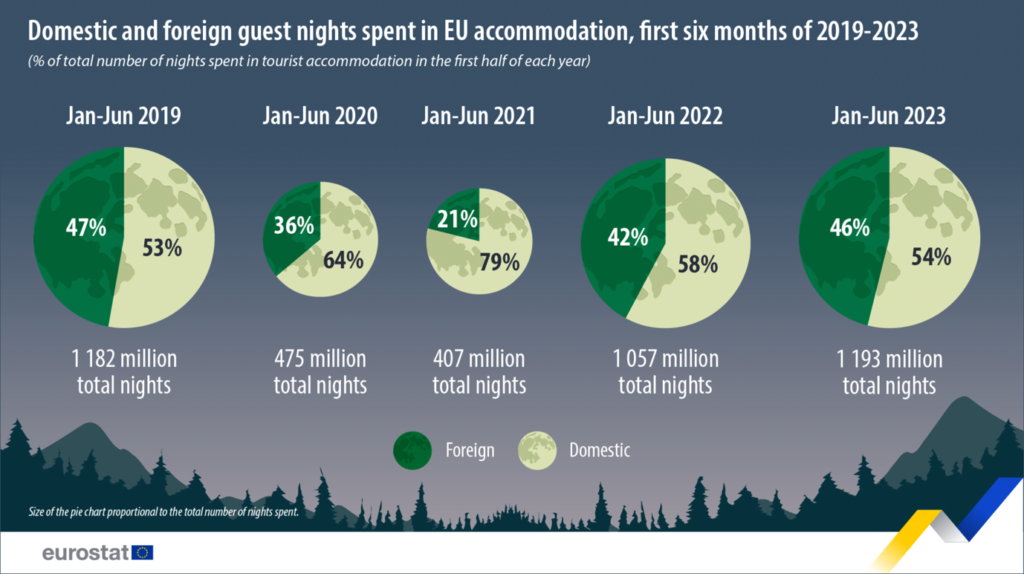
In many cases, local residents believe that tourism has reached – or even exceeded – its reasonable limits. A top UNESCO official has warned that the impact of tourism is seriously harming local people’s ability to buy property, making them feel increasingly hostile towards the holidaymakers. Professor Ribeiro said that “tourism is dying of success in some destinations”.
We must not assume that nothing comes for free. Some things – a dwindling number, perhaps – still do. Looking at London, for instance, daily service at St. Paul’s Cathedral are still free and, indeed, open to everyone, although sightseeing tickets will cost you £25 (around €30), which will get you access to the Cathedral floor, the Crypt and the Dome Galleries, which include the remarkable Whispering Gallery, the circular walkway that surrounds the nave, far below. The acoustics are so strange that somebody standing on one side is able to whisper to someone on the opposite side and be heard perfectly. It’s quite a site to see, although you’ll have to climb 259 steps to reach it. Other places of interest to tourists in London include the Natural History Museum and the Victoria and Albert Museum, which are free although visitors are urged to make voluntary donations. There may also be a charge to see special exhibitions being held there. Free admission to the various national museums began in December 2001 and is sponsored by the Department for Culture, Media and Sport. And I can say with personal conviction that these places are well worth visiting, whether or not you decide to make a donation.
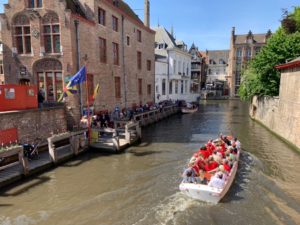
In Britain’s case, the decision to quit the European Union has meant that trips to Europe are likely to cost more. For example, a visit to see such wonderful places as the Louvre museum or the Cathedral of Notre Dame will shortly cost British tourists an extra €5 because the UK is no longer in the EU, although some of Europe’s less well-visited destinations are cashing in on this by advertising that they’re not charging this so-called “Brexit tax”.
The mayor of Bruges, which received 7-million tourists in 2023, thinks his city is onto a winner with that: “Come to Bruges, it’s cheaper!”. Dirk De fauw told Britain’s Daily Telegraph that Bruges will always welcome visitors. “For us it is all the same,” he said, “if they come from Mexico, or if they come from China, or if they come from Korea, or if they come from London.” He is hoping his city can benefit from the backlash against tourists that is being witnessed elsewhere. Venice, after all, is making a €5 “tourist charge” in a bid to cut down on overcrowding. De fauw is urging people to come and see the city’s magnificent canals and many historic buildings, especially after the day trippers have gone to bed for the night. Berlin and Amsterdam are among the cities that have stated that they will not impose a “Brexit” tax on tourists.
| FACING DOWN A TOURIST OVERDOSE
European holiday destinations are not alone in trying to tackle excess tourism. Japan, for instance, has blocked off a popular view of Mount Fuji. You’d need an enormous sheet to hide the Eiffel Tower, I think. Meanwhile Copenhagen has come up with a novel notion: get the visitors working. If they pick up litter or carry out other environmental services for the city they can earn a modest reward. Yes, “Wonderful, Wonderful Copenhagen”, as Danny Kaye sang in the 1952 movie, Hans Christian Andersen, has been encouraging its visitors to keep it clean (among other things) in order to earn free food and “special cultural experiences”, with the aim of putting a lid on just how many tourists the city can absorb. It’s far from being the most “over-touristed”, with only twelve annual visitors for every inhabitant. Florence gets thirteen, with Bruges, Rhodes and Venice each getting twenty-one while poor old Dubrovnik, in Croatia, gets a stunning thirty-six! That’s a lot of visitors.
In Amsterdam’s case, there’s now a ban on creating new hotels as a means of restricting the numbers. In 2023, twenty-seven million new jobs were created in the travel and tourism sector, according to the World Travel and Tourism Council. Indeed, travel and tourism account for around 10% of global GDP and when the COVID-pandemic struck Europe, revenues in some sub-sectors fell by 80%, affecting some 11-million jobs. The inevitable pause in world leisure travel is at least giving policy-makers an opportunity to re-examine their policies.
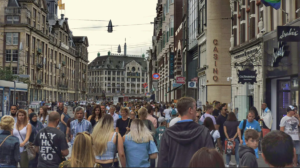
According to the World Economic Forum’s Travel and Tourism Development Index, there is an “imperative to embed sustainability and resilience into the design and management of the sector”. Some regions concerned about the volume of tourists coming each year have introduced various measures to keep them under control. Venice has its entry fee for tourists who’ve come to see the famous canals but are only staying for one day. There is also now an overnight tax, the rate varying according to the number of nights involved and the number of stars the accommodation has been awarded. Amsterdam is seriously considering a ban on cruise ships visiting its city centre (it may have been enacted by the time you read this), while Marseille (lovely, exciting place!) has introduced a reservation system aimed at limiting the numbers entering the Calanque National Park (located on the Mediterranean coast in Bouches-du-Rhône, in Southern France) which was established in 2012 and which extends over 520 km², around 85 km² of which is land. France gets some 37-million visitors every year, but they tend to gather in just 20% of the country, which seems a bit unfair on local residents. There again, we have Italy’s Amalfi coastal road, upon which non-residents are only allowed to drive on certain days. The views are said to be stunning, by the way. In other popular spots for foreign visitors, the authorities are considering (or have already imposed) a tourism tax. If you can’t keep them out, it seems, you can at least extract money from them.
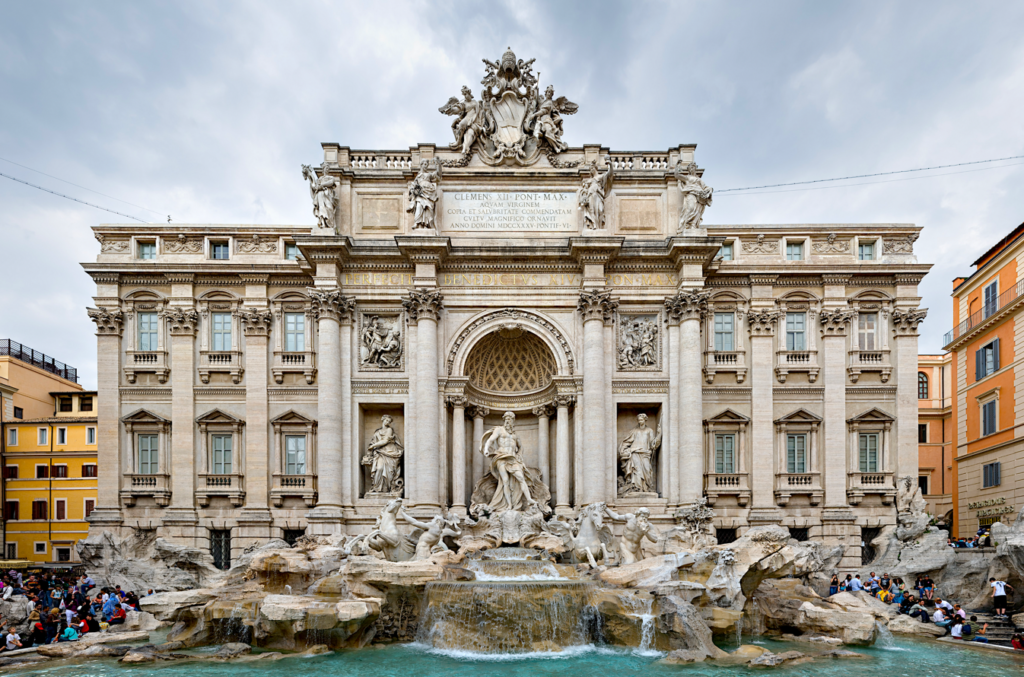
Tourists have been obliged to pay taxes for their travels over many years, with the money raised in that way going to help fund infrastructure and useful facilities (which ironically can attract yet more visitors). Now, however, we come to specific “ecotourism taxes”, which are to be ring-fenced for reinvestment in what are called “sustainability projects”, although they also serve to remind visitors that their visits involve a certain amount of environmental effort, all of which costs money, of course. Topaz Smith, who is Community Lead for Aviation, Travel and Tourism at the World Economic Forum, says it’s to support conservation activities, promoting environmental education, training hospitality workers and boosting the ability of local communities to manage tourism and also derive benefit from it.
Looking further afield, Asian destinations also face problems. Take the case of water, for instance in Bali, a province of Indonesia and also the most western of the Lesser Sunda Islands. Local inhabitants get through around 14 litres of fresh water per day, while any one of the place’s daily 625,665 tourist visits during July 2024 will get through 1,785 litres per day. You think that’s bad? Well, for tourists staying in hotels there, that figure jumps to 4,000 litres per day. Aa Zhang Jiajie, Assistant Professor in Human Geography at Singapore’s Nanyang Technological University, points out, a proper working balance must be worked out. “A robust framework needs to be set up,” he told the Eco-Business website, “for proper reporting on how the funds raised by such taxes benefit conservation efforts and local livelihoods. Otherwise,” he warned, “the trickle-down effect is questionable.” On a lovely island that tourists love to visit, and which enjoys a lovely sunny clime, but which doesn’t get a great deal of rain (or even enough), it’s very clear that action is needed urgently, although exactly what sort of action is not so easy to see. It’s clear that driving the tourists away would have a negative impact on the whole, but on the other hand how can anyone find a safe way to deliver sufficient safe water to those who need it?

So here we are: a world in which increasing numbers of people can afford to enjoy exotic foreign travel to places with sunshine, sea and sand, do we really want to stop them from fulfilling their dreams? Clearly not: they’ve worked hard for their money (unless they’re crooks or politicians) and they deserve to fulfil a long-held dream of comfort and luxury (perhaps) far from their everyday troubles. The conundrum comes in achieving that without causing social, environmental and/or financial disaster in so doing.
It’s certainly not easy. If it’s any consolation, it’s a problem that is rooted in human success; otherwise few indeed could afford all that travel, so very few would get to visit the world’s many beauty spots and enjoy their holidays there. Time for the world’s great thinkers to contemplate the difficulties and find ways to overcome them that won’t negatively affect others (perhaps especially those fortunate enough to live in such lovely parts of the world).
There’s no easy solution, as far as I can see, but we all have the right to enjoy our few days in the sunshine, don’t you think? OK, pack your swimming gear, perhaps your snorkel and rubber ring, and off we go for a seat in the sun. If only!
<!– Origin
!–>
This post was originally published on here







